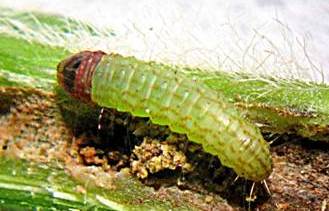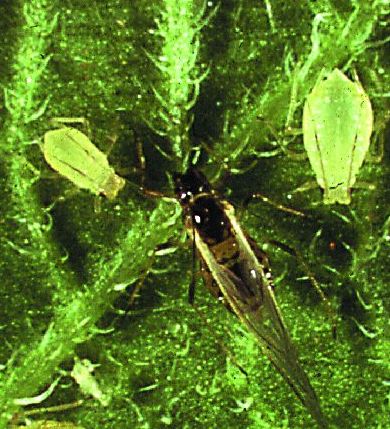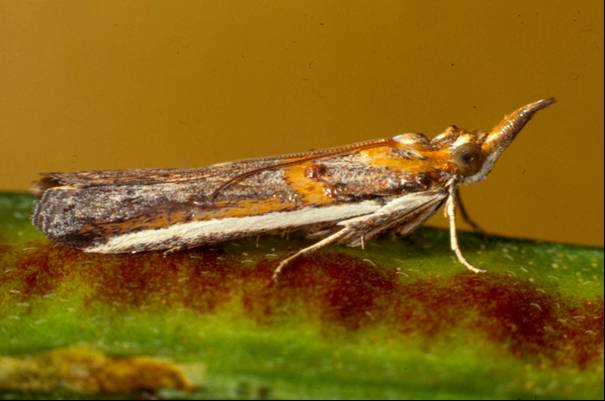Helicoverpa armigera active now. This spring a number of agronomists have just started monitoring pheromone traps across the northern region, and the results from the past two weeks illustrate how useful pheromone traps can be. Over the past 1-2 weeks, the traps are catching relatively high numbers of Helicoverpa armigera, and low catches of H. punctigera. In September it is generally assumed that… Read more »
Background A new leaf-mining fly, the vegetable leafminer (Liriomyza sativae), has recently been found at Seisia on the western side of the top of Cape York, Queensland. Originally from the Americas, since the 1980s this pest has spread westwards across the Pacific into Asia and has been island hopping across Torres Strait since 2008. Any suspected sightings of the pest should be… Read more »
There is an understandable level of concern about how best to manage etiella (Etiella behrii) in summer mungbean crops following the unexpectedly high etiella infestations (and corresponding seed damage and contamination) in spring mungbean crops on the Downs and in Central Queensland and North Western New South Wales. Responding to the etiella threat without reacting prematurely and creating more pest… Read more »
In the autumn and early winter of 2014, large areas of canola in South Australia, Victoria and southern NSW were heavily infested with green peach aphid (GPA), and many of the infested crops tested positive for beet western yellows virus (BWYV). GRDC TV has compiled a series of three videos that discuss what factors contributed to the GPA outbreak, and… Read more »
A significant etiella outbreak was recently reported in pod-filling mungbean in the Moree region of North Western NSW. In this particular crop, it is estimated that etiella larvae have infested pods on 50% of plants. Etiella eggs, at low densities, were also recently observed in an early flowering crop near Bungunya (west of Goondiwindi, Qld).
Rutherglen bug (RGB) numbers in canola stubble are again high in some fields. These infestations pose a risk to neighbouring crops, either through damage to establishing summer crops or contamination of unharvested winter crops. Both the canola and adjacent crops warrant monitoring for RGB infestation and movement out of the canola field. If large number of nymphs move into adjacent fields with seedling… Read more »
As canola sets and matures pods, and spring temperatures rise, there are a number of caterpillar pests that are active in this crop. Along with helicoverpa there are diamondback moth larvae (Plutella xylostella) and cabbage white butterfly larvae (Pieris rapae) in crops. It is critical that you can distinguish the species, and be familiar with their respective thresholds, in order… Read more »
As temperatures start to warm up there are a number of insect pests becoming active and causing crop damage. This post provides an overview of current and potential issues for field crops.
Crops are most susceptible to pest damage at the seedling stage. Pests feeding on seedlings can reduce plant establishment, increase weed competition, delay flowering and lower yields. In some cases there may be a need for re-sowing. Most of the establishment pests found in the northern region are soil-dwelling insects. Soil insects may be difficult to detect prior to sowing…. Read more »
The white-fringed weevil (Naupactus leucoloma) originates from South America and was first reported in NSW in 1932. Although generally associated with warm moist conditions, this pest is now found in many cropping areas throughout Australia and they appear to be increasing their range. Infestations often go unnoticed until crops are planted and once they are established they are difficult to… Read more »




